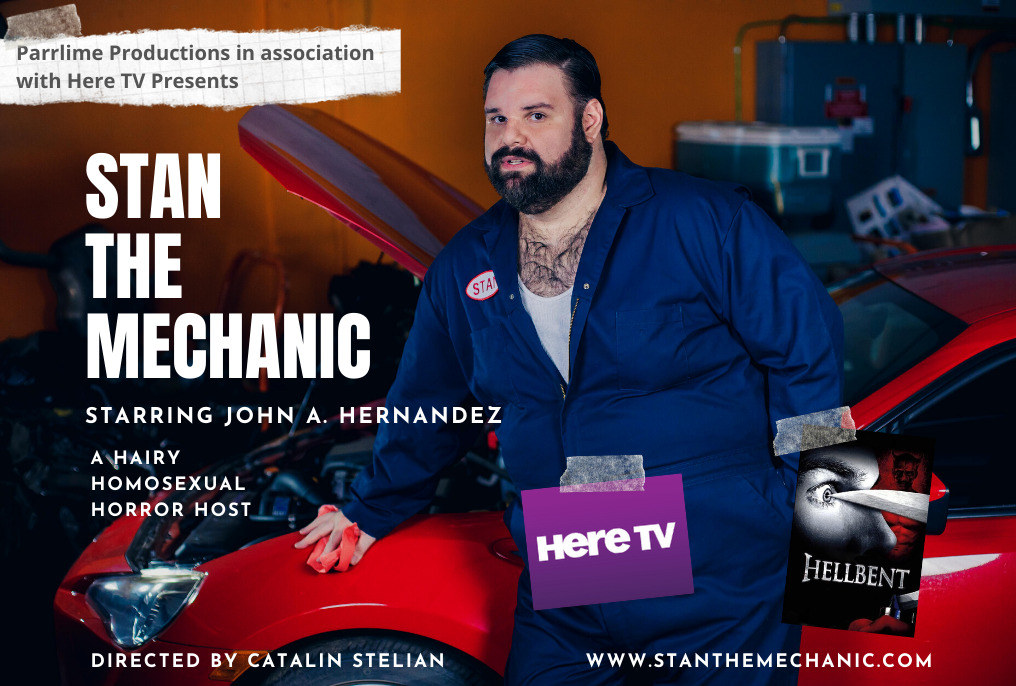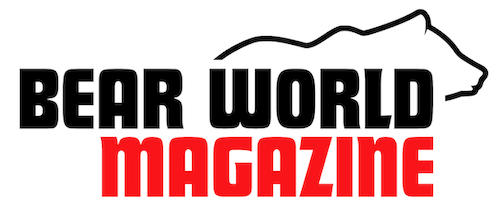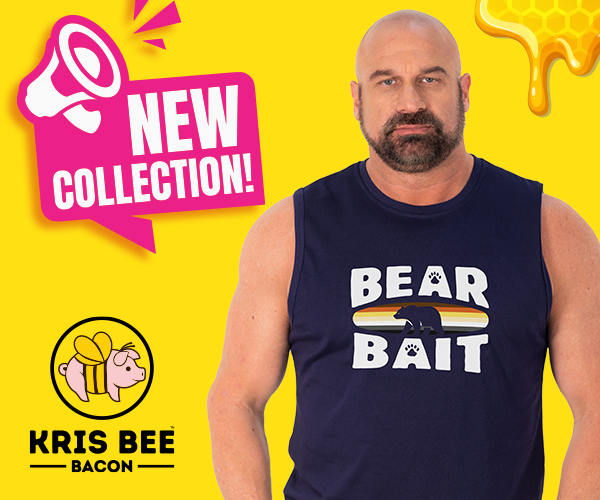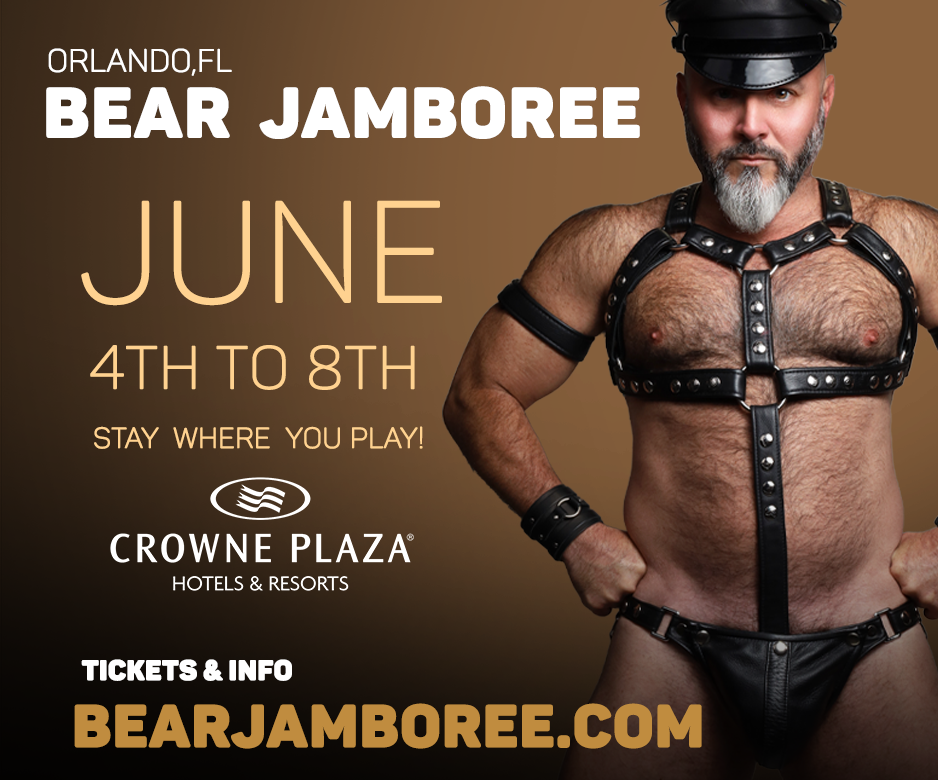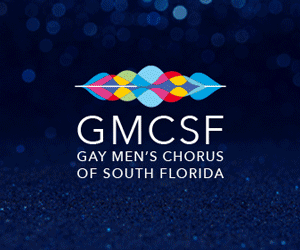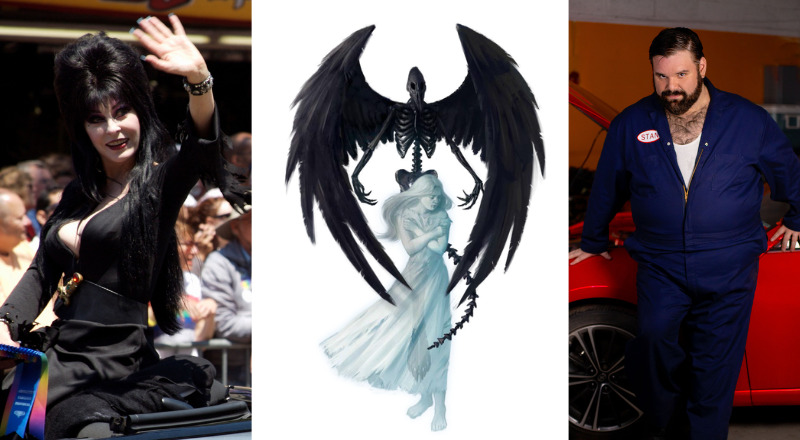
Gays, Panic: The Queer Crypt, from Vampira to Stan the Mechanic.
In Greek mythology, a psychopomp is an entity, like the Grim Reaper, who carried souls to the land of the dead. But the psychopomp didn’t carry only those who had died; he’d carry anyone who paid the toll — who wanted to cross over.
In many ways, the TV horror host is a contemporary psychopomp: a guide to a strange world. Often, these horror “telepomps” are touched by the darkness on the other side of the River Styx: Vampira and Elvira (no relation), Dr. Shock and Dr. Creep (not real doctors), and Svengoolie and Son of Svengoolie (neither related nor actual Svengoolies) name only a few.
Even actors who play themselves as hosts are of the other world: Hitchcock and Serling give us glimpses into strange hells in hopes that we won’t end up there too; Vincent Price, though campy, was so with purpose and poise; even Joe Bob Briggs is marked by his kitschy accoutrements and arcane knowledge of the dark drive-in arts.
As I have discussed elsewhere, the queer individual has the ability to find themselves in the monster. I shared this recently in a digital sit-down with John Hernandez, the man behind Stan the Mechanic (Here TV’s new queer horror host); he said, “As a young gay man I identified with the vampires. More specifically, Anne Rice’s vampires since the movie version of Interview With the Vampire was released when I was 13 years old and in the throes of figuring my sexuality out. I remember those angst-ridden days feeling like Louis, being forced to hide who I was and actively resisting what came naturally to me.”
John added, “I also identified with the Frankenstein’s monster.” Saying, “he was set loose in a world he has no idea how to navigate. His instinct was to look for love and connection and he was instead feared and rejected because of how he looked. His loneliness and frustration caused him to lash out in monstrous ways, but always in an attempt to make his creator acknowledge him. Coming out, while difficult, has proven to be much easier than overcoming our society’s perception of people who look different.”
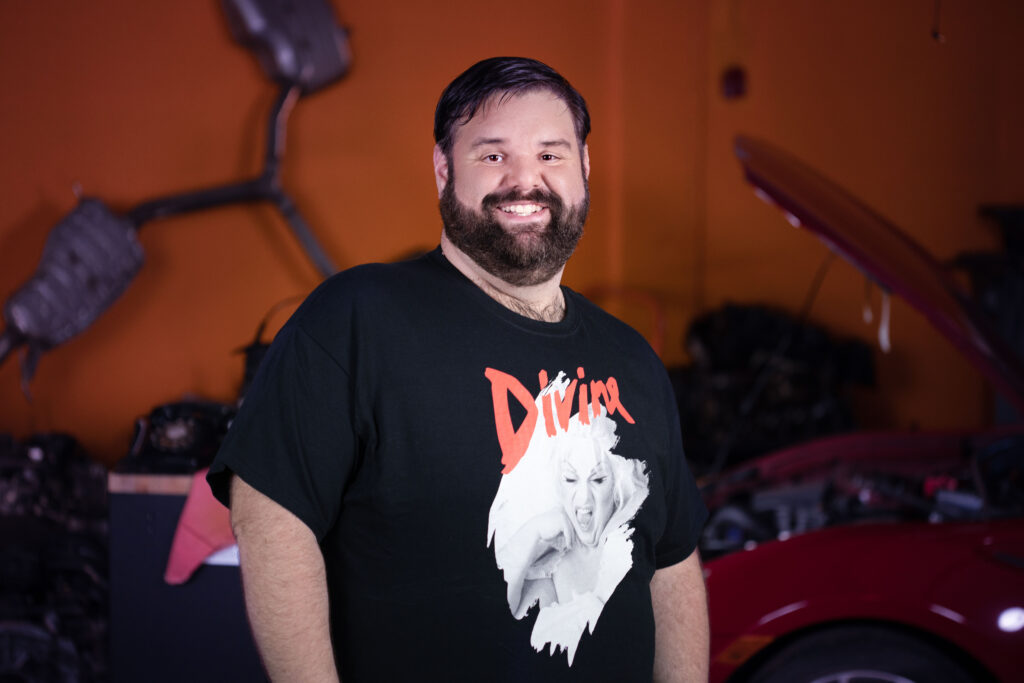
John, in his discussion of Interview with a Vampire and Frankenstein’s monster, points to the exact reason queer folk need these horror host telepomps: they are our first mentors, the first momma bear or fairy drag queen to take us under their tutelage. John also said, “The horror host was someone who loved the movies I loved. People thought they were weird just like they thought I was weird. They were outcasts like me and I was drawn to them.”
But, is The Crypt Keeper queer? Hell yes! Bear with me here: First, he’s a confirmed bachelor — aside from a music video, I’ve never seen him with a woman. Second, he’s still living at home in the basement (and if he’s anything like Norman Bates, it’s fair to assume mother is still resting upstairs). Third, he has a flair for theatrics that only the animated corpse of Liberace could rival. I’m being glib about The Crypt Keeper, but there is truth here: horror hosts serve as gatekeepers — not just to a world of horror, but in a world where the monster and the queer are both other, they are the psychopomp of queerness.
For many queer folk, the television is a window to not just to the “other” but a window that allows the “other” to be from “another” world — a world where difference is fascinating and celebrated. John says, “my burgeoning queerness actively sought out role models and people that represented the other.”
A horror telepomp excited about scary stories tells the queer audience that whatever scares them is actually fun! A horror telepomp who finds joy in the monster tells the queer audience that difference (queerness) is compelling. A horror telepomp who does deep research on obscure films tells the audience they are worthy of being known, like Frankenstein’s monster wanted to be known. And a horror telepomp who simply shows up, week after week, tells the audience something far more important: somewhere out there, there are people like you — and we are fun and smart and we don’t put up with peopling making fun of our makeup, nail polish, fangs, hairy backs, our hyper-campy sexuality, or even our bolo ties (I see you Joe Bob).
I’m situating the horror telepomp as queer not just because of surface coding or audience affinity — though I do think those are incredibly important. What I find more compelling is the logistics that lead to the attraction of a queer audience. Slowly but surely queers have been gaining momentum, and while it may not be true now, in the hay day of the horror host, acceptance was low.
The effeminate man, the butch woman, the blossoming trans-person, and all other forms of queers who didn’t have the words to express their difference could take refuge on lonely late night weekends with another outsider: a host in another world, someone theatrical, smart, funny, and/or sexy; a host who is knowledgeable and who is willing to teach; a host welcoming wayward children into the brood, like Peter Pan for runaway drama freaks.
John says, “The horror host is supposed to be a friend and a companion to the viewer and they know that. The host becomes whatever the viewer needs them to be. A good host recognizes that horror fans are still considered somewhat of a fringe community comprised of all sorts of people from all walks of life, gay and straight alike, and invites them to the party anyway! For men like us they were companions in the metaphorical closet but for others Joe Bob maybe served as the cool father figure or uncle that let them watch those forbidden movies. Elvira was that beautiful woman that gave nerdy teenage boys the time of day or taught girls that they can be sexy, smart and in control of their own bodies and image.” So the telepomp is what we call on them to be: queer, sexy, father figure, or all three!
I think John is hitting on something important: the horror host, the modern day psychopomp, what I deemed the telepomp, gives the queer person with horror affinities a welcome home and agency over their own lives and bodies. Svengoolie says be cheesy if you’re cheesy. Joe Bob says be nerdy if you’re nerdy. Elvira says if you feel sexy be sexy. John, Stan the Mechanic, says, “I want queer youth to see me: a Puerto Rican, gay, plus sized man living his dream and having a good time while doing it. I want everyone who watches the show to feel welcomed and represented and I want them to know that they have a friend in Stan.”
Stay tuned for a full interview with John.
In the meantime, check him out here: www.stanthemechanic.com, coming to the Here TV App October 29.
